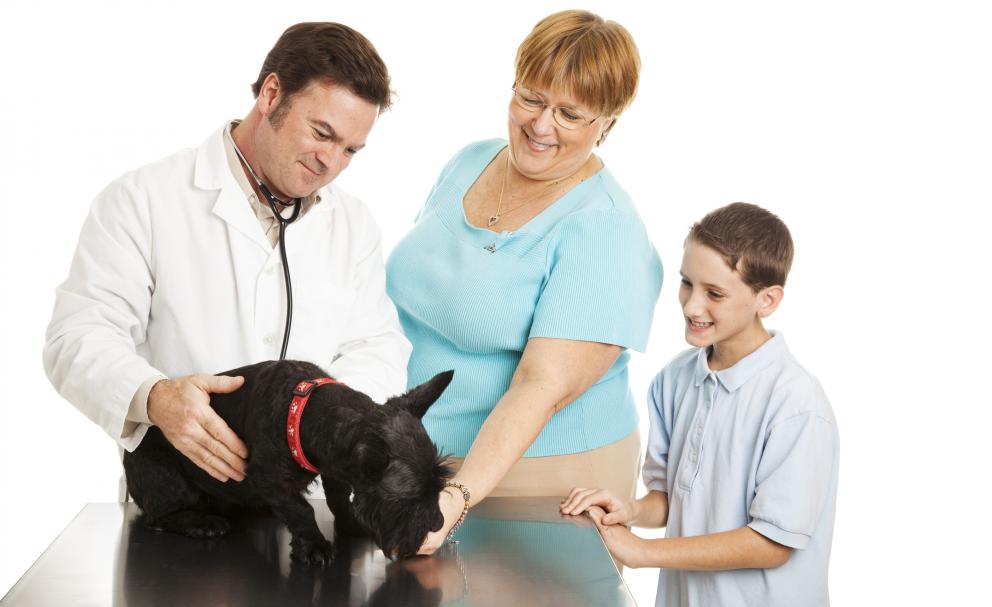You are here
Special Treatments

You’ve seen the recent stories about how 3D printers have provided wonderful alternatives to pricey prosthetic devices in animals, but what other veterinary advances have occurred in recent years? The one that stands out for us is the advancement of veterinary oncology. Cancer accounts for more than 50% of death in geriatric animals so it makes sense that cancer therapy has become more wide spread.
Numerous pet owner surveys have highlighted the fact that the majority of pet owners see their pets as part of the family, and the term “fur babies” is commonly used in veterinary clinics by both the pet parents and the veterinary term to describe the patients. Veterinary clinics commonly hear “my family member suffered so much in their cancer treatment. I don’t want my dog/cat to suffer like that”. On the other hand, families don’t want to say goodbye if there’s any hope in having their pet enjoy more time with the family. Thankfully some tumours are benign, and some cancers are not as aggressive as others so it’s worthwhile to explore all options with your veterinarian.
Cancer Treatment
A diagnosis of cancer is a big shock to a family. Along with the emotional reaction, there are immediate decisions to be made. Your veterinary team is there to help you through this rough time. Don’t worry about asking too many questions—come with a list of your questions so you don’t forget to ask when you are feeling stressed and emotional. Your veterinarian and you both want the same thing—the highest quality of life for as long as possible.
There are three main conventional cancer treatments that are used alone or in combination: surgery, chemotherapy, and radiation therapy.
Surgery
As with any serious medical procedure, the veterinarian will run a series of tests to ensure the pet is healthy enough to undergo surgery. These tests may include blood work, x-rays, and/or ultrasound to determine if the cancer has spread to other organs as well as other tests specific to the type of cancer involved.
During surgery, the veterinarian will remove the tumour as well as some of the normal tissue surrounding the tumour to ensure that all tumour cells have been removed. If the surgeon is unable to achieve “clean margins” (removal of all the cancer cells), then a second surgery may be performed and/or chemotherapy or radiation therapy may be added to help destroy any remaining cancer cells.
Chemotherapy
The goal of chemotherapy is to control or eliminate the cancer while providing the best quality of life for your pet. The drugs kill or slow down the growth of the cancer. Chemotherapy agents are usually given by injection and less commonly orally. Animals seem more resistant to side effects than humans are. Vomiting, diarrhea, and lethargy are the most common side effects. Hair loss is rare, but cats do lose their whiskers. Some chemotherapy drugs cause a decrease in white blood cells.
Radiation Therapy
Radiation therapy is delivered using a linear accelerator or a stereotactic radiosurgery unit and is available in Alberta through referral from your regular veterinarian.
Complementary Therapy
Some veterinarians have certifications in complementary therapies such as homeopathy, acupuncture, rehabilitation, chiropractic. You can discuss these therapies with your veterinarian to decide if they will help in your pet’s situation.
Other Supportive Therapies
The claims that non-mainstream practitioners make can sound promising. However, researchers do not know how safe many of these treatments are or how well they work. Studies are underway to determine the safety and usefulness of many of these practices.
To minimize the health risks of a non-mainstream therapy:
- As stated above, inform your veterinarian to ensure no interactions
- Find out what the research says about the therapy
- Choose therapists carefully
Others Treatments Available from Veterinary Specialists
Just as in human medicine, there are practicing specialists in the field of veterinary medicine. A specialist is a veterinarian who has undertaken extra training (typically 3-4 years) to gain advanced competency in a very specific area of veterinary medicine. Once the training is completed, comprehensive examinations and evaluation of proficiency are carried out by the specific specialty “colleges”. Upon satisfactory completion of this intensive evaluation the veterinarian is granted their “board certification” in the specific specialty in which they trained. Examples of specialties in veterinary medicine include anesthesiology, cardiology, emergency and critical care, dentistry, dermatology, internal medicine, neurology, ophthalmology, radiology, and surgery. You can ask your regular veterinarian for a referral to a veterinary specialist. Veterinary specialists can be found through an online directory.
